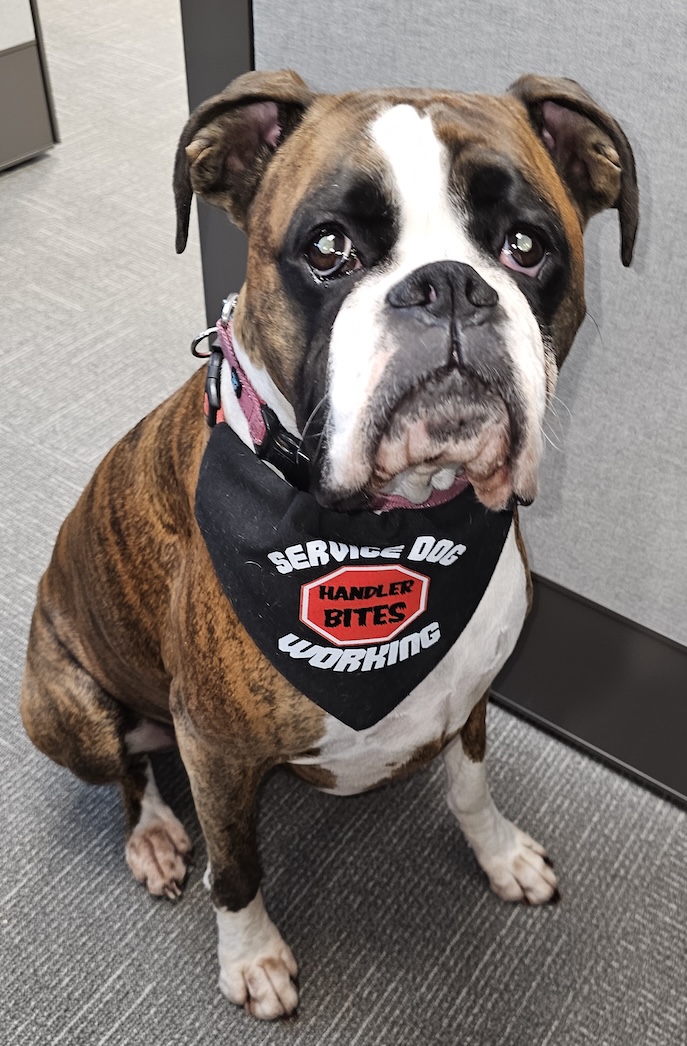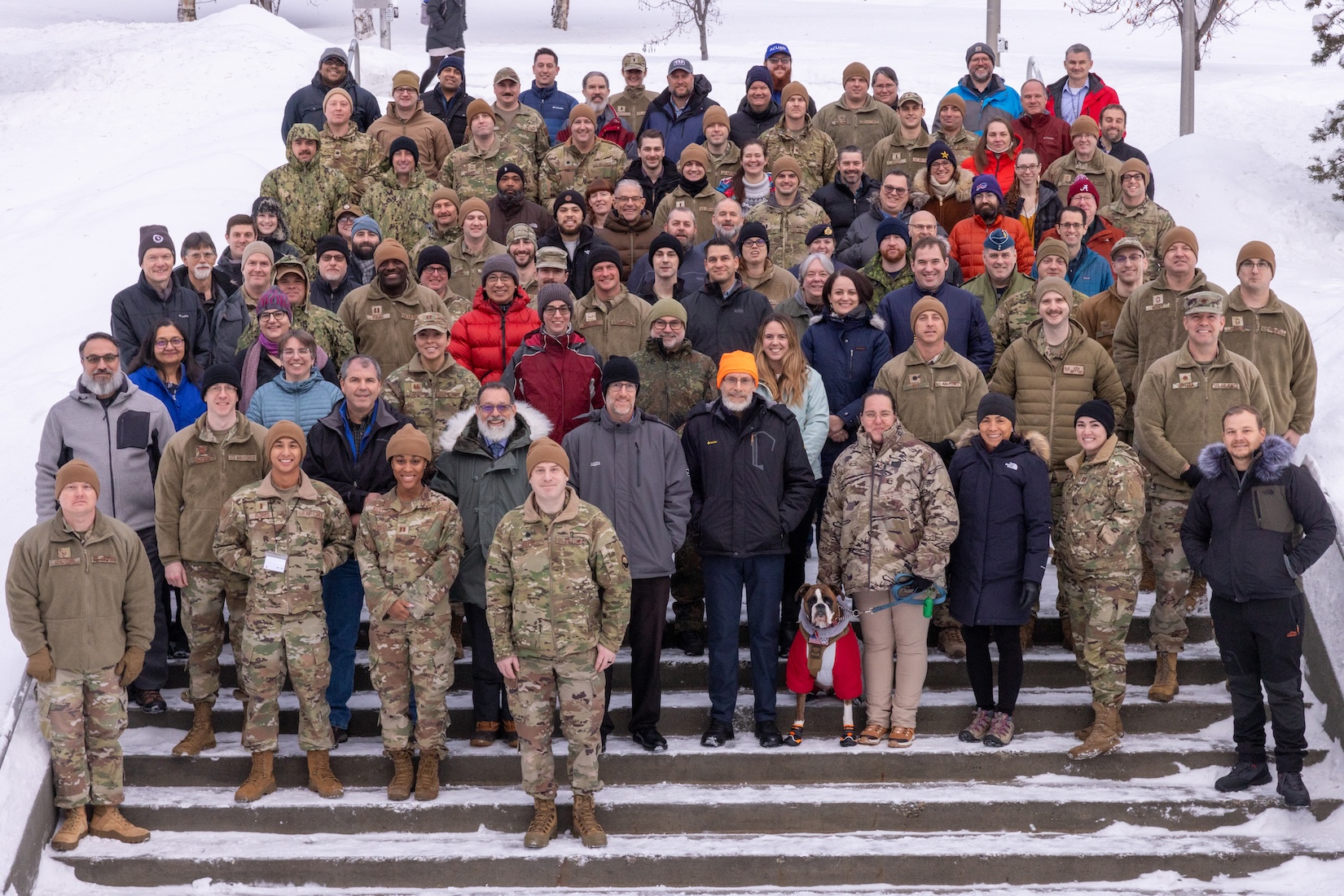Arctic METOC Partnership Summit (AMPS) Mission:
To gather representatives from tactical, operational, and strategic meteorological and oceanographic (METOC) forecasting levels to identify cold region-specific data and knowledge gaps and propose collaborative solutions in response to DoD and other NATO nations’ Arctic Strategies.
AMPS 2025 will be held virtually March 19-21, 2025. Click here to register in advance for virtual participation over Zoom. See below for more details on Zoom registration.
There is no longer an in-person option for this Summit; all associated events (tours, Icebreaker Dinner, etc.) have been canceled. All the group lodging reservations at Bear Lodge have been cancelled. If you had lodging reservations at other hotels, you will have to cancel them yourselves.
If you had previously paid registration and parking fees for AMPS 2025, you will be refunded. The planning team is currently working through refunding all payments. If you have any questions about your refund, please contact Sara Wilbur, smwilbur2@alaska.edu or 907-474-5229.
There are four main objectives to this Summit:
- Summit Objective 1:
Build transparency/awareness of capabilities, strengths/weaknesses, requirements, and availability of high latitude METOC products/data created and available (sometimes by request) from DoD, Government, University, and NATO METOC entities.
- Summit Objective 2:
Continue the dialogue from AWW24 to improve relationships between Government, University, international partners, and DoD METOC offices and research labs which may allow more collaboration for both research to operations (R2O) and operations to research (O2R).
- Summit Objective 3:
Update the progress from the Sensing Strategy Working Group and the Arctic Training Working Group and identify where we should continue our collective efforts to shrink data gaps and fill technology voids using Artificial Intelligence, Machine Learning, or other means which should lead to improvements in data availability and forecasting accuracy in Arctic regions.
- Summit Objective 4:
Invite Alaska Natives to discuss and share their unique perspectives on climate change impacts in Alaska and the Arctic and what they can teach us from their experiences in forecasting weather in the high latitudes.
Questions about the Summit? Please contact Major Jim Feiccabrino, james.feiccabrino.1@us.af.mil; Gail Weaver, gail.weaver.1@us.af.mil; or 2d Lt Brandon Flores, brandon.flores.6@us.af.mil.
- Register virtually
For those of you who cannot attend AMPS 2025 in person, click here to register in advance for virtual participation over Zoom.
After registering, you will receive a confirmation email containing information about joining the meeting.
The Zoom link will be active during the following dates and times (Alaska time):
- Mar 19, 2025 07:30 – 15:00
- Mar 20, 2025 07:30 – 15:10
- Mar 21, 2025 07:30 – 11:25
If you have questions about Zoom registration, please reach out to Sara Wilbur, smwilbur2@alaska.edu or 907-474-5229.- Agenda
Please view the final agenda here. If you have questions about the agenda, please contact Gail Weaver, gail.weaver.1@us.af.mil.

Bella, service dog and official AMPS 2025 mascot. - Expert panelists
- Speaker bios
- Dr. Cathy Cahill, Director, Alaska Center for Unmanned Aircraft Systems Integration (ACUASI)
- Dr. James (Jim) D. Doyle, Naval Research Laboratory, Marine Meteorology Division
- Major James M. Feiccabrino, United States Air Force
- Dr. Kelsey "Doc Freeze" Frazier, Ph.D., Ted Stevens Center for Arctic Security Studies
- Lieutenant Colonel Jeremy J. Hromsco, United States Air Force
- Master Warrant Officer Christian Le Gal, Canadian Armed Forces
- Lieutenant Colonel Elizabeth K. Ramoso, United States Air Force
- Carl Schmitt, Research Associate Professor, University of Alaska Fairbanks
- Chief Master Sergeant Heath T. Tempel, United States Air Force
- Presentations
Wednesday, March 19
- Alaska Center for Unmanned Aircraft Systems Integration (ACUASI) — Capabilities Brief, Dr. Cathy Cahill
- Communicating Uncertainty, Mr. David Levin
- Post-Typhoon Merbok, Mr. Eugene Petrescu
- Alaska Sea Ice Program IDSS, Ms. Adisen Fenrich
- IDSS in the NWS Fairbanks Forecast Area, Mr. Evan Kutta
- Using Machine Learning to Understand Atmospheric Conditions One Snowflake at a Time, Dr. Carl Schmitt
- MSC/COMET Arctic Forecasting Series, Ms. Robyn Dyck
- OVERCAST: Global, Satellite-based 3D Clouds, Dr. John M. Haynes
- Fostering Relationships Across Agencies: Farthest North Chapter of the American Meteorological Society, Ms. Tricia Hutton
Thursday, March 20- US Air Force Weather Capabilities, Mr. Jason Noren
- LEO Satellites: Providing Critical Data for Decision Support, Dr. Jen Delamere
- ARTC Meteorology Sites, Mr. Daniel Wozniczka
- 557 WW Tactics Development Program, Mr. Branden Wright
- The IDSS Engine: Connecting Partners with Critical Decision-making Information, Mr. Daniel Nietfield
- DESI: Dynamic Ensemble-based Scenarios for IDSS, Mr. Daniel Nietfield
Friday, March 21- Arctic Sensing Strategy Overview, Lt. Col. Jeremy Hromsco
- Weather Requirement Request (WRR) Standard Operating Procedure (SOP), Mrs. Gail Weaver
- Tomorrow.io, Mr. Thomas Cavett
- Zoom recordings
- Links, contacts and comments shared during AMPS 2025
Wednesday, March 19
- https://builder.nrl.navy.mil
- ECMWF is working on observation-to-observation ML forecasts. Their AI-Direct Observation Prediction (AI-DOP).
- Fleet Numerical Center (Navy)
- FAA Observation Program
- AFW is holding a virtual Industry Day. Day 1 on April 1st may be of interest to education & industry/company partners. LCMC & ACC/A5W will touch on some of their current projects, etc. See agenda on the website.
- https://akclimate.org
http://www.usarray.org.org/Alaska (weather, soil and temperature sensors)
http://smoke.alaska.edu (plume weather info for wildfires) - Open GitHub Repository that can convert NUCAPS-ERs to text and then converted to Skew-T plots
- American Meteorological Society Chapter (Alaska):
26 March, 4 p.m., next AMPS meeting online and in person. POC: Ms. Tricia Hutton. Contact info: phutton5@alaska.edu
Thursday, March 20- We used the Met Norway model AROME during a research field campaign over the Norwegian Sea and found it useful. Just to note, the Navy (NRL and FNMOC) also has the ESPC global coupled (air-sea-ice) system, and an Arctic version of our high-res regional COAMPS model (which has coupled options).
- Ash 3D-ash load in cloud and ash fall forecast
https://volcview.wr.usgs.gov/ (based on GFS model)
https://vsc-ash.wr.usgs.gov/ash3d-gui/#!/ - https://www.nesdis.noaa.gov/about/our-offices/office-of-low-earth-orbit-observations
GINA’s website: https://gina.alaska.edu/
CIRA’s website: https://www.cira.colostate.edu/
CIMSS website: https://cimss.ssec.wisc.edu/ - Alaska Satellite Facility: https://asf.alaska.edu/
- NASA LIS: https://lis.gsfc.nasa.gov/
- NISAR: https://nisar.jpl.nasa.gov/
- CIRA Polar Slider: https://col.st/QMFCb
- Recent DNB images for polar settings: https://proto.gina.alaska.edu/distro/nrt-polar/
- Recent DNB images for Alaska: https://proto.gina.alaska.edu/distro/nrt/
- VAWS NWS Sea Ice Presentation: https://uaf-accap.org/event/vaws-norseman-ii-support/
- Alaska Wildland Fire Information Map Series
- CIRA Quick Guides: https://rammb2.cira.colostate.edu/training/visit/quick_reference/
NGFS: https://cimss.ssec.wisc.edu/ngfs/ - CIRA Polar Slider: https://rammb-slider.cira.colostate.edu/
Friday, March 21- METED polar courses: https://www.meted.ucar.edu
Here is a list of MetEd COMET lessons specific to Arctic and Polar METOC learning - Gabriel Cardwell: gabriel.cardwell.1@us.af.mil
- VISIT — Quick Reference Material for satellites: https://rammb2.cira.colostate.edu/training/visit/quick_reference/
- CRREL in Hanover, NH has extreme cold room facilities, not sure how low they go as I have not had to use them for my research thus far.
https://www.erdc.usace.army.mil/Media/News-Stories/Article/3051983/erdc-leaders-cut-ribbon-to-new-climatic-cold-chamber-building/ This is one of our newer facilities, but we have others… - Thomas Cavett: thomas.cavett@tomorrow.io

